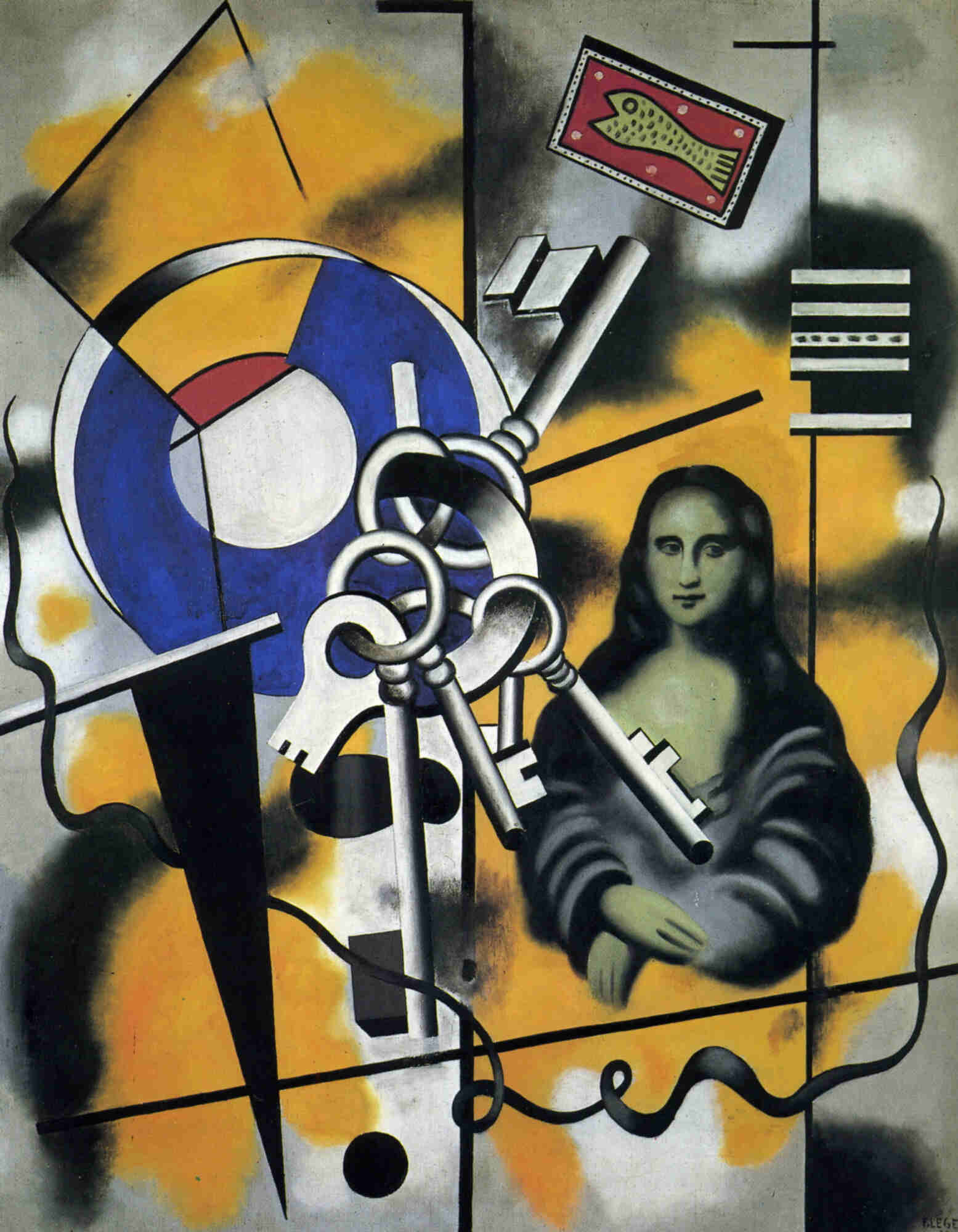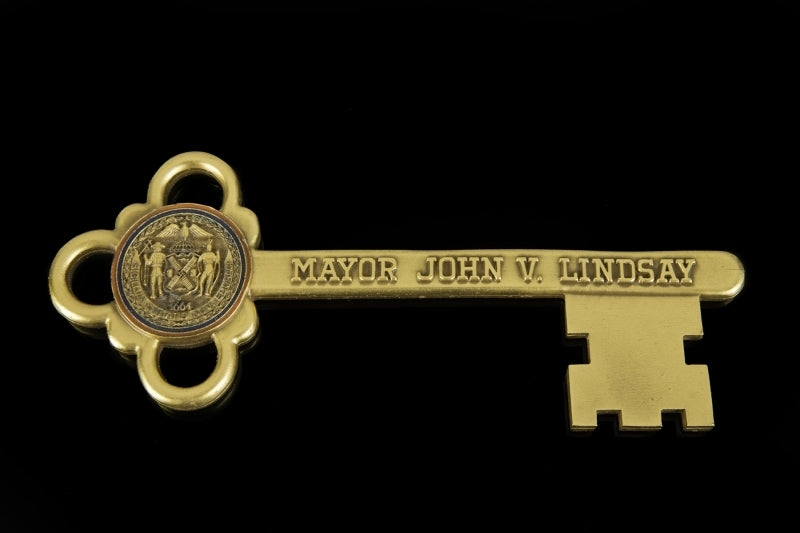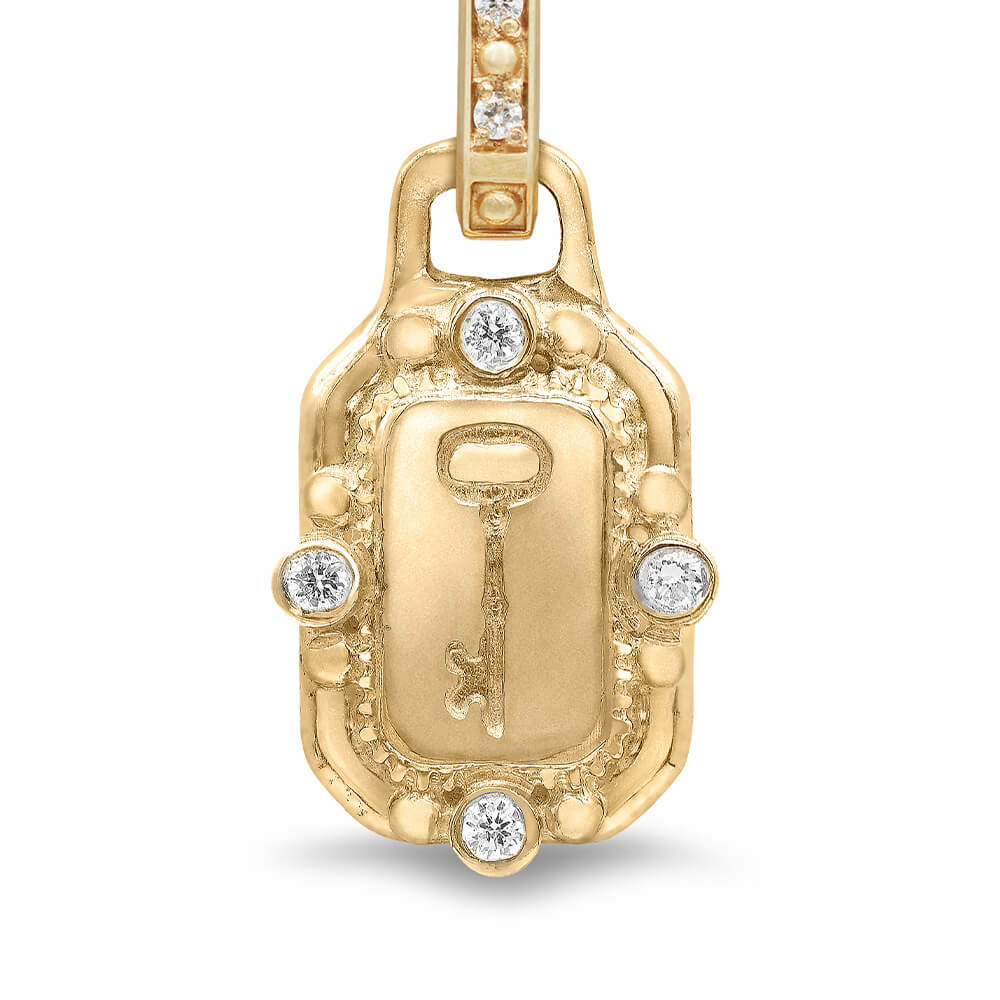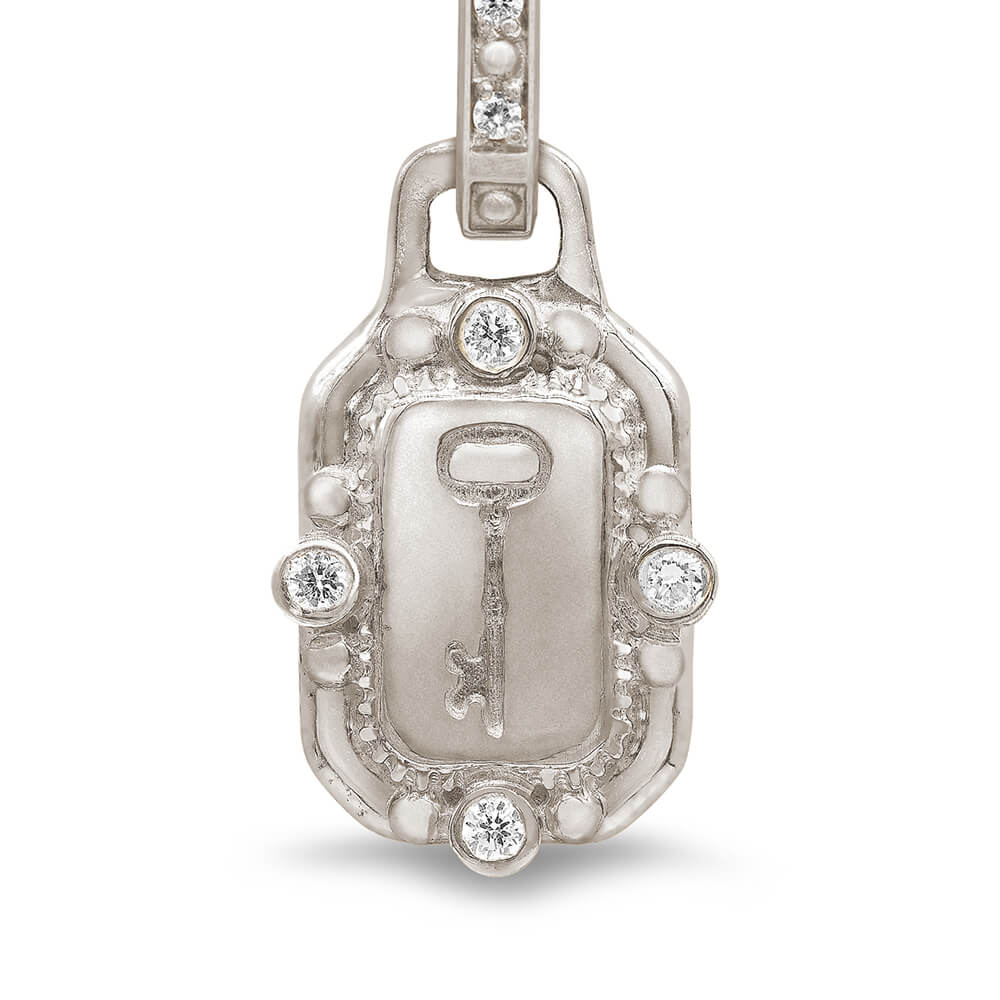The key Symbol has long captivated human imagination, standing for much more than a simple object used to unlock doors. Across different cultures and ages, it has embodied notions of authority, the discovery of hidden knowledge, the safeguarding of the precious, and the opening of new possibilities. From ancient times to modern narratives, the key carries a timeless resonance, signifying mystery and the ability to unlock the pathways of fate. Exploring its deep-rooted significance reveals how it continues to reflect the complexities of life's journeys and the pursuit of enlightenment.
Amuletha™ Book of Symbols
Key Symbol
*Mona Lisa with the Keys by Fernand Leger
Fernand Léger's Mona Lisa with the Keys is a bold reinterpretation of da Vinci’s Mona Lisa, blending Cubism with his signature geometric style. The painting features abstract shapes, vivid colors, and the iconic figure holding keys, symbolizing mystery and modernity. Léger's work merges traditional art with industrial modernism, reimagining Mona Lisa as a symbol of contemporary life. The keys add an element of unlocking hidden meanings within the artwork.

*Mona Lisa with the Keys by Fernand Leger
Fernand Léger's Mona Lisa with the Keys is a bold reinterpretation of da Vinci’s Mona Lisa, blending Cubism with his signature geometric style. The painting features abstract shapes, vivid colors, and the iconic figure holding keys, symbolizing mystery and modernity. Léger's work merges traditional art with industrial modernism, reimagining Mona Lisa as a symbol of contemporary life. The keys add an element of unlocking hidden meanings within the artwork.
KEY SYMBOL ORIGIN
The key has long been a symbol of authority, knowledge, and mystery, with its origins dating back to ancient civilizations. Keys were first used in ancient Egypt and Mesopotamia around 4,000 years ago, primarily to secure valuable treasures or important documents. These early keys were simple in design, made of wood or bronze, and were not only practical tools but also symbols of power and access. Those who held the key were seen as trusted and important figures, able to unlock what was hidden or secure.
As keys evolved through the centuries, their symbolic meaning expanded. In Ancient Rome, the key became associated with the goddess Hecate, the deity of magic, crossroads, and gateways. She was often depicted holding keys, representing her control over passageways between worlds, both physical and spiritual. Keys also held importance in Christian iconography, where the Apostle Peter is often shown holding the keys to heaven, symbolizing his role as the gatekeeper of eternal salvation. This religious connection further solidified the key as a representation of access to hidden or sacred knowledge.
Over time, the key’s symbolism continued to grow, representing not just physical access but metaphorical unlocking as well. In the Middle Ages, keys were worn as jewelry to signify status and wealth. They came to represent the unlocking of doors to new opportunities, knowledge, or truths. Today, the key remains a powerful symbol, often used in literature and art to signify discovery, access to hidden truths, and the ability to unlock one’s potential or destiny.
What does KEY symbolize
The Key symbol holds deep significance across various cultures. These four are the most recognized of the meanings it illustrates:
Opportunities
Keys are often associated with the start of a new journey or phase in life, representing the opening of doors to fresh possibilities and experiences.
Authority
Holding a key signifies having control and authority, both over one's own life and in situations requiring decision-making and leadership.
Protection
Keys also symbolize the power to protect and secure valuable things, be they tangible possessions or intangible virtues like trust and love.
Knowledge
They are emblematic of the discovery of hidden truths and the unlocking of mysteries, suggesting a journey toward deeper understanding and wisdom.
Cultural mention
The key symbol has long been a powerful and multifaceted symbol across cultures, representing access, authority, and the ability to unlock both physical and metaphorical doors. Throughout history, the key symbol has been imbued with profound meaning, whether it symbolizes spiritual power, knowledge, or personal achievement. From religious contexts to revolutionary moments and ceremonial traditions, the key symbol plays a central role in conveying trust and protection.
Saint Peter and the Keys to Heaven
In Christian tradition, Saint Peter is depicted holding the keys to heaven, symbolizing his authority as the gatekeeper of eternal salvation. Jesus granted Peter this role, marking him as the leader of the early Church and giving him spiritual power over binding and losing on earth and in heaven. The keys in this context represent divine authority, access to sacred wisdom, and the ability to unlock eternal life for believers. Over centuries, this imagery has become central in Christian art, reflecting the keys’ association with faith, forgiveness, and spiritual insight.
*Saint Peter by Peter Paul Rubens

*Saint Peter by Peter Paul Rubens
The Key to the Bastille
The key to the Bastille prison holds a profound place in history as a symbol of revolution and the triumph of liberty over tyranny. On July 14, 1789, the storming of the Bastille marked the start of the French Revolution and the collapse of the oppressive monarchy. The prison, which once embodied royal power and control, became a symbol of freedom and the people's fight for justice. The Marquis de Lafayette, a French military leader, later gifted the key to George Washington as a token of shared ideals. It now resides at Mount Vernon, symbolizing the enduring connection between the French and American revolutions and the global struggle for liberty.
*The original key to the Bastille, located in Mount Vernon

*The original key to the Bastille, located in Mount Vernon
The Key to the City
The Key to the City is an honorary symbol traditionally presented to individuals as a mark of trust, respect, or gratitude. This custom dates back to medieval times when cities were often walled and fortified, and the key granted someone privileged access to the city's gates, symbolizing freedom and protection within. In modern times, the Key to the City has become a ceremonial gesture awarded by mayors or civic leaders to distinguished individuals, such as visiting dignitaries, celebrities, or local heroes, in recognition of their contributions to society, philanthropy, or exceptional achievements. Though it no longer provides physical access, it symbolizes the recipient’s esteemed place in the community, often used to celebrate acts of bravery, generosity, or public service.
*New York symbolic Key to the City given to famous footballer Pele.

*New York symbolic Key to the City given to famous footballer Pele.
Key symbol in the world of jewelry
Key symbols in jewelry often appeal to individuals who seek a sense of mystery, protection, and self-discovery. Key necklaces are popular among people who wish to symbolize unlocking new opportunities, knowledge, or even personal potential. Often, it is worn as a talisman of empowerment and freedom, reflecting a desire to unlock hidden aspects of one’s life or mind. Key jewelry can also carry spiritual connotations, representing a connection to deeper meanings, such as unlocking divine wisdom or protecting one’s future.Gifting key jewelry carries a rich symbolic meaning. When given to someone, a key represents trust, access to personal space, or a gateway to the future. It can signify a special bond, such as the key to one's heart in romantic contexts. Key symbols are also popular gifts to celebrate milestones like graduations or new ventures, signifying the unlocking of new possibilities and opportunities in the recipient’s life.
What does a key symbolize in literature?
In literature, the Key symbol often represents access to hidden knowledge, unlocking mysteries, or the power to open new realms of possibility. The Key frequently appears in various genres, particularly in fantasy, mystery, and adventure literature, where it serves as a metaphor for discovery and revelation. In many stories, the Key becomes a crucial object, either to unlock a secret or to signify a character's journey toward enlightenment or change.
The Secret Garden by Frances Hodgson Burnett
One of the most famous literary works featuring a key symbol is Frances Hodgson Burnett's The Secret Garden. In the novel, the key unlocks a hidden, neglected garden that ultimately transforms the lives of the main characters. The garden itself is a symbol of healing and personal growth, while the key serves as the literal and figurative means to unlock these transformations. The discovery of the key signifies the beginning of a journey toward renewal and emotional recovery.
Cover of the book “The Secret Garden” by Frances Hodgson Burnett

"The Keys of the Gates" by William Blake
The keys of the gates are the songs of heaven,
The keys of the gates are the words of reason,
The keys of the gates are the songs of angels,
The keys of the gates are the music of the spheres.
Blake’s poem presents the Key as a symbol of divine enlightenment. The keys open the gates to higher understanding, symbolizing the unlocking of spiritual truths through music, reason, and heavenly inspiration.
"The Lockless Door" by Robert Frost
And then I found the door where I had left it;
I turned the key upon the bolt,
Drew back the lock, let down the door,
And stood a moment more in fear.
In Frost’s haunting poem, the key is central to the theme of fear and missed opportunity. The locked door symbolizes the barriers we place between ourselves and the unknown, and the key represents the possibility of facing those fears. The speaker’s reluctance to use the key reflects our tendency to avoid the profound changes that opening the door might bring.
"The Dreaming of the Bones" by William Butler Yeats
I bring you my passion,
My sword and my keys,
My words are as quick and as bitter
As the stings of the bees.
In this poem, Yeats uses the key as a symbol of power and authority, intertwined with the emotional and spiritual struggles of the characters. The key represents both the ability to unlock knowledge and the heavy burden that comes with holding such power.
Thoughts
Thoughts placed alongside a symbol resonate with its meaning, serving as a guide to expand your understanding of the symbol's significance in relation to your personal experiences. AMULETHA™ also embraces this approach, invites a deeper contemplation of how symbolic meanings can reflect and enrich your life’s narrative, enhancing your appreciation of both the symbol and its broader implications.
Gateways of Destiny - Keys often herald the dawn of a new chapter, serving as gateways to unexplored realms and adventures, unlocking paths to uncharted opportunities and transformative experiences.
The Scepter of Dominion – Holding a key grants control and influence, shaping not only one's future but also providing wisdom, guidance, and leadership when needed.
Shield of Guardianship - Keys embody the sacred power to safeguard what is most cherished, whether it be material treasures or ethereal virtues such as trust, loyalty, and love.
Veil of Hidden Wisdom - They stand as symbols of the revelation of hidden secrets, the unsealing of mysteries, and the pursuit of enlightenment, guiding the seeker toward profound insight and deeper wisdom.
FREQUENTLY ASKED QUESTIONS
What is a skeleton key?
A skeleton key is a type of master key that can open many different locks, especially older locks with simple mechanisms. It is called a "skeleton" key because it has been filed down to remove any unnecessary parts, leaving just the essential components needed to manipulate the internal pins or wards of various locks.
When did people start making keys?
People began making keys around 4,000 years ago, with the earliest known examples dating back to Ancient Egypt and Mesopotamia. These early keys were made of wood or bronze and were used primarily for securing doors or treasure chests. The Egyptian "pin tumbler lock" was one of the first locking mechanisms, with a large, rudimentary key designed to move pins within the lock to secure or unlock it.
What is the term for collecting keys?
Key collecting is called Copoclephily. This hobby involves collecting keys, often antique or vintage, due to their historical significance, craftsmanship, or unique designs. Collectors may focus on specific types of keys, such as skeleton keys, ornate keys, or keys from certain historical periods.


















